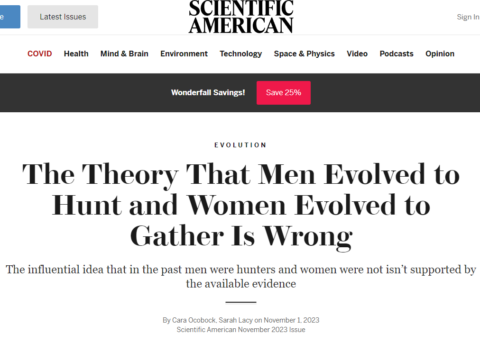The Weeklies, of which Orwell identifies ten, produced by two different publishers and including two older series somewhat different from the others, were very popular reading, targeted at boys up to about fourteen or fifteen. All of the stories in the two older ones and many in the others were set in British public schools; Orwell suggests, plausibly enough, that much of the inspiration for the setting was Kipling’s Stalky and Company.
Orwell focuses mostly on the two older ones, each of which had a stock cast of characters and a setting that showed no sign of changing for the thirty years over which they had been coming out and recognizably stylized plots and dialog. He comments that although each claims to be written by a single named author — “Frank Richards” for one series and “Martin Clifford” for the other — it is obvious that a single author could not have done thirty years of weekly stories and that the stylized writing is in part a way of maintaining the illusion of a single author.
The essay is interesting both for the detailed, and to some extent sympathetic, description of the weeklies
In the Gem and Magnet there is a model for very nearly everybody. There is the normal athletic, high-spirited boy (Tom Merry, Jack Blake, Frank Nugent), a slightly rowdier version of this type (Bob Cherry), a more aristocratic version (Talbot, Manners), a quieter, more serious version (Harry Wharton), and a stolid, “bulldog” version (Johnny Bull). Then there is the reckless, dare-devil type of boy (Vernon-Smith), the definitely “clever”, studious boy (Mark Linley, Dick Penfold), and the eccentric boy who is not good at games but possesses some special talent (Skinner Wibley). And there is the scholarship-boy (Tom Redwing), an important figure in this class of story because he makes it possible for boys from very poor homes to project themselves into the public-school atmosphere. In addition there are Australian, Irish, Welsh, Manx, Yorkshire and Lancashire boys to play upon local patriotism. But the subtlety of characterization goes deeper than this. If one studies the correspondence columns one sees that there is probably no character in the Gem and Magnet whom some or other reader does not identify with, except the out-and-out comics, Coker, Billy Bunter, Fisher T. Fish (the money-grabbing American boy) and, of course, the masters.
and for Orwell’s analysis of their political implications. He thinks they are designed, probably deliberately by the owners of the firms that publish them, to indoctrinate boys with conservative views — respectful towards the upper classes, ignorantly patriotic, contemptuous of foreigners, blind to the real problems of British society.
Here is the stuff that is read somewhere between the ages of twelve and eighteen by a very large proportion, perhaps an actual majority, of English boys, including many who will never read anything else except newspapers; and along with it they are absorbing a set of beliefs which would be regarded as hopelessly out of date in the Central Office of the Conservative Party. All the better because it is done indirectly, there is being pumped into them the conviction that the major problems of our time do not exist, that there is nothing wrong with laissez-faire capitalism, that foreigners are un-important comics and that the British Empire is a sort of charity-concern which will last for ever. Considering who owns these papers, it is difficult to believe that this is un-intentional. Of the twelve papers I have been discussing (i.e. twelve including the Thriller and Detective Weekly) seven are the property of the Amalgamated Press, which is one of the biggest press-combines in the world and controls more than a hundred different papers. The Gem and Magnet, therefore, are closely linked up with the Daily Telegraph and the Financial Times. This in itself would be enough to rouse certain suspicions, even if it were not obvious that the stories in the boys’ weeklies are politically vetted. So it appears that if you feel the need of a fantasy-life in which you travel to Mars and fight lions bare-handed (and what boy doesn’t?), you can only have it by delivering yourself over, mentally, to people like Lord Camrose.
The essay ends with a somewhat tentative suggestion that someone ought to produce a left-wing equivalent and a discussion of some problems in doing so.
It is an interesting essay on its own merits. Still more interesting is the response, an article by Frank Richards rebutting Orwell and defending his own work. It turns out that, contrary to Orwell’s confident claim, most of thirty years of weekly stories by “Frank Richards” were produced by the same person, with occasional stories by other authors when he was for some reason not available. Further, as Orwell comments in a later footnote to his essay, Frank Richards was also Martin Clifford, so the same person produced, for thirty years, most of the contents of two different weekly magazines for boys.
His response shows him to be an intelligent and articulate writer. His views are conservative in a general sense; he makes it clear that the setting of the stories is an unchanging 1910 England because he does not think much of the changes since. But he also makes it clear that the reason his stories do not include strikes, unemployment, labor unions, and a variety of other features of the real world is that he believes that providing boys an imaginative foundation in a secure world helps equip them to face future difficulties in a world much less secure.
Of strikes, slumps, unemployment, etc., complains Mr Orwell, there is no mention. But are these really subjects for young people to meditate upon ? It is true that we live in an insecure world: but why should not youth feel as secure as possible? It is true that burglars break into houses: but what parent in his senses would tell a child that a masked face may look in at the nursery window ! A boy of fifteen or sixteen is on the threshold of life: and life is a tough proposition; but will he be better prepared for it by telling him how tough it may possibly be? I am sure that the reverse is the case. Gray — another obsolete poet, Mr Orwell! — tells us that sorrows never come too late, and happiness too swiftly flies. Let youth be happy, or as happy as possible. Happiness is the best preparation for misery, if misery must come. At least, the poor kid will have had something! He may, at twenty, be hunting for a job and not finding it — why should his fifteenth year be clouded by worrying about that in advance? He may, at thirty, get the sack — why tell him so at twelve? He may, at forty, be a wreck on Labour’s scrap-heap — but how will it benefit him to know that at fourteen? Even if making miserable children would make happy adults, it would not be justifiable. But the truth is that the adult will be all the more miserable if he was miserable as a child. Every day of happiness, illusory or otherwise — and most happiness is illusory — is so much to the good. It will help to give the boy confidence and hope. Frank Richards tells him that there are some splendid fellows in a world that is, after all, a decent sort of place. He likes to think himself like one of these fellows, and is happy in his daydreams. Mr Orwell would have him told that he is a shabby little blighter, his father an ill-used serf, his world a dirty, muddled, rotten sort of show. I don’t think it would be fair play to take his twopence for telling him that!
As a child in England in the early 1960s, I didn’t encounter any of the stories by Frank Richards (at least, I strongly doubt it), but many of the storylines and tropes of his work were still echoed by later authors, especially in the British comics (Lion, Tiger, Valiant, Rover, and The Hotspur among the many offerings). Alongside the heroic adventure stories, the war stories, science fiction, and the (omnipresent) football stories, there were still some that might well have been comic versions of Mr. Richards’ originals.
I missed them after we emigrated, but I was delighted find that the W.H. Smith bookshop at Sherway Gardens carried a few of them (at a significant mark-up, of course) so I was still getting my occasional comic fix until about 1974.






















